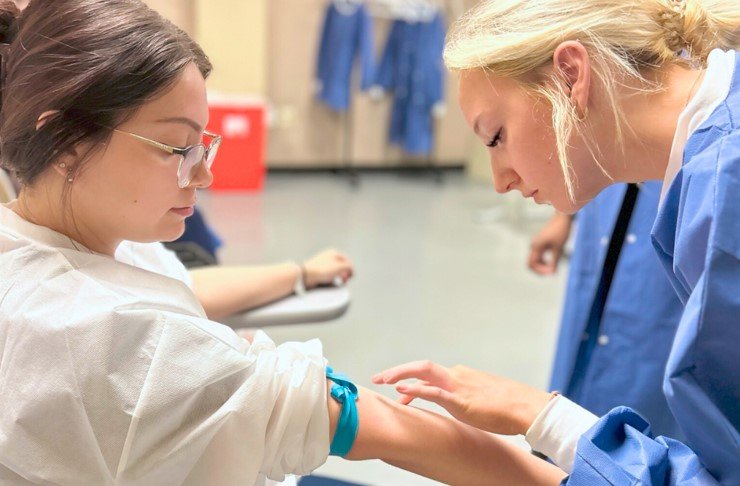Strategies for Hospitals to Address Antibiotic Resistance Challenges and Ensure Adequate Supply
Summary
- Hospitals play a critical role in addressing antibiotic resistance challenges by ensuring an adequate supply of antibiotics.
- Effective hospital supply and equipment management strategies are essential in combating antibiotic resistance.
- Collaboration with healthcare professionals, monitoring antibiotic use, and implementing stewardship programs are key steps for hospitals to address antibiotic resistance challenges effectively.
Antibiotic resistance is a growing public health concern worldwide, posing a significant threat to global health. Hospitals play a crucial role in addressing antibiotic resistance challenges by ensuring an adequate supply of antibiotics for patients. Effective hospital supply and equipment management strategies are essential in combating antibiotic resistance and preserving the effectiveness of antibiotics for future generations.
Challenges in Ensuring an Adequate Supply of Antibiotics
Ensuring an adequate supply of antibiotics in hospitals to address antibiotic resistance challenges is not without its challenges. Some of the key challenges include:
1. Antibiotic Shortages
Antibiotic shortages have become a common problem in hospitals across the United States. These shortages can result from various factors, including manufacturing issues, regulatory challenges, and increased demand. As a result, hospitals may struggle to access essential antibiotics, leading to delays in treatment and compromised patient care.
2. Overuse and Misuse of Antibiotics
Overuse and misuse of antibiotics in hospitals can contribute to the development of antibiotic resistance. Inappropriate prescribing practices, inadequate infection control measures, and patient demand for antibiotics can all contribute to the overuse and misuse of antibiotics. It is crucial for hospitals to implement effective antibiotic stewardship programs to promote appropriate antibiotic use and combat antibiotic resistance.
3. Cost of Antibiotics
The cost of antibiotics can also be a barrier to ensuring an adequate supply in hospitals. Some antibiotics can be expensive, leading hospitals to face financial challenges in maintaining an adequate inventory. This can result in difficulties in providing timely and appropriate treatment to patients with bacterial infections.
Strategies for Ensuring an Adequate Supply of Antibiotics
Despite the challenges, hospitals can take proactive measures to ensure an adequate supply of antibiotics to address antibiotic resistance challenges effectively. Some strategies include:
1. Collaboration with Healthcare Professionals
Collaboration with healthcare professionals, including pharmacists, infectious disease specialists, and microbiologists, is essential in ensuring the appropriate use of antibiotics. By working together, healthcare professionals can develop evidence-based guidelines for antibiotic prescribing, monitor antibiotic use, and implement interventions to improve prescribing practices.
2. Monitoring Antibiotic Use
Monitoring antibiotic use in hospitals is critical for identifying trends in antibiotic prescribing, detecting outbreaks of antibiotic-resistant infections, and evaluating the effectiveness of antibiotic stewardship programs. Hospitals can use electronic health record systems, antimicrobial stewardship software, and other tools to track antibiotic use and optimize prescribing practices.
3. Implementing Stewardship Programs
Implementing antibiotic stewardship programs is essential for promoting the appropriate use of antibiotics and combating antibiotic resistance. These programs involve a multidisciplinary approach to antibiotic prescribing, including education, guidelines for antibiotic use, and monitoring of prescribing practices. By implementing stewardship programs, hospitals can reduce the overuse and misuse of antibiotics and improve patient outcomes.
Conclusion
In conclusion, hospitals play a critical role in addressing antibiotic resistance challenges by ensuring an adequate supply of antibiotics for patients. Effective hospital supply and equipment management strategies, such as collaboration with healthcare professionals, monitoring antibiotic use, and implementing stewardship programs, are essential for combating antibiotic resistance and preserving the effectiveness of antibiotics. By taking proactive measures to address antibiotic resistance challenges, hospitals can contribute to improving patient outcomes and reducing the spread of antibiotic-resistant infections.

Disclaimer: The content provided on this blog is for informational purposes only, reflecting the personal opinions and insights of the author(s) on the topics. The information provided should not be used for diagnosing or treating a health problem or disease, and those seeking personal medical advice should consult with a licensed physician. Always seek the advice of your doctor or other qualified health provider regarding a medical condition. Never disregard professional medical advice or delay in seeking it because of something you have read on this website. If you think you may have a medical emergency, call 911 or go to the nearest emergency room immediately. No physician-patient relationship is created by this web site or its use. No contributors to this web site make any representations, express or implied, with respect to the information provided herein or to its use. While we strive to share accurate and up-to-date information, we cannot guarantee the completeness, reliability, or accuracy of the content. The blog may also include links to external websites and resources for the convenience of our readers. Please note that linking to other sites does not imply endorsement of their content, practices, or services by us. Readers should use their discretion and judgment while exploring any external links and resources mentioned on this blog.

